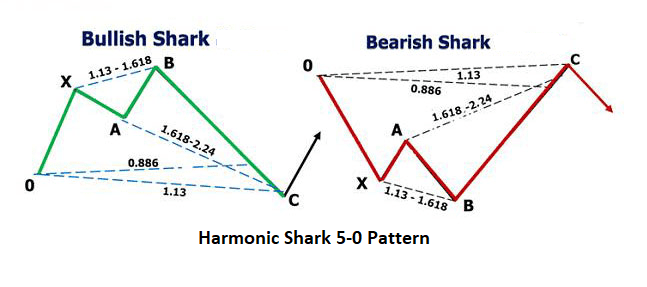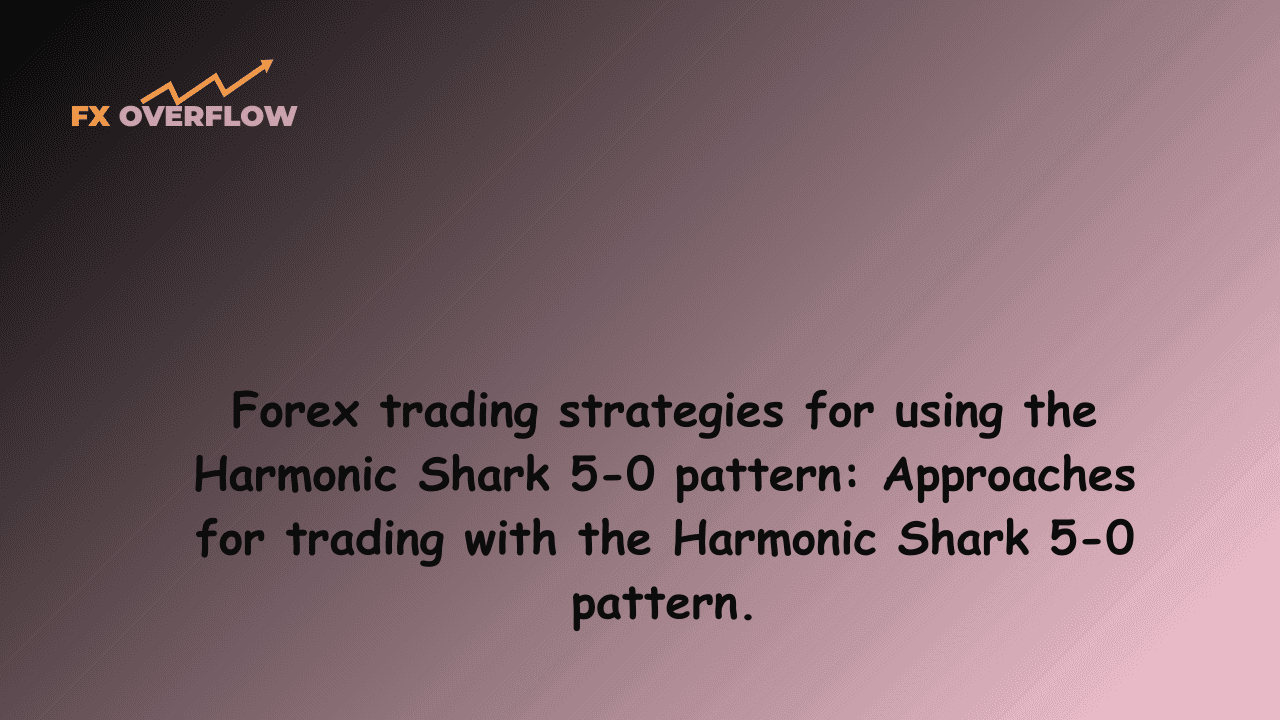Forex trading strategies for using the Harmonic Shark 5-0 pattern: Approaches for trading with the Harmonic Shark 5-0 pattern.
In the world of forex trading, success hinges on the ability to decipher complex market movements and trends. Traders often turn to various technical analysis tools and patterns to gain an edge. One such tool that has gained prominence in recent years is the Harmonic Shark 5-0 pattern. This unique pattern is a derivative of the broader Harmonic Pattern family and offers traders a distinct way to identify potential entry and exit points. In this article, we'll delve into the intricacies of the Harmonic Shark 5-0 pattern and explore effective strategies for trading with it.

Table Content
I. Understanding the Harmonic Shark 5-0 Pattern
II. Trading Strategies with the Harmonic Shark 5-0 Pattern
1. Identifying the Pattern
2. Confirming with Confluence
3. Waiting for Confirmation
4. Risk Management
5. Profit Targets
6. Trade Size and Position Sizing
7. Practice and Back-testing
8. Market Conditions
9. Continual Learning
III. Footnote
Understanding the Harmonic Shark 5-0 Pattern
The Harmonic Shark 5-0 pattern is a combination of price and time ratios that help traders identify potential reversal points in the market. Like other harmonic patterns, it is based on Fibonacci levels and geometry, aiming to pinpoint areas where the market is likely to change direction. The pattern consists of five distinct points labeled X, A, B, C, and D. The Shark 5-0 pattern is characterized by a deep retracement of the initial price move and involves the following key ratios:
a) XA: The initial leg of the pattern, where traders measure the distance from point X to point A. This move is generally a significant price decline or incline.
b) AB: The corrective leg from point A to point B, which retraces a portion of the XA leg. The AB leg typically retraces around 50% to 88.6% of the XA leg.
c) BC: This leg extends from point B to point C and should ideally reach a minimum of 38.2% retracement of the AB leg.
d) CD: The final leg from point C to point D, which ideally completes a 50% retracement of the BC leg. Point D becomes the potential reversal zone, indicating a possible entry point for traders.
e) XD: The distance from point X to point D provides an important target for potential profits.
Trading Strategies with the Harmonic Shark 5-0 Pattern
1. Identifying the Pattern: The first step in trading the Harmonic Shark 5-0 pattern is identifying the pattern accurately on a price chart. Utilize technical analysis tools and platforms that offer harmonic pattern recognition to spot potential Shark 5-0 formations. The pattern's distinct structure should be visible, ensuring that the XA, AB, BC, and CD legs align with the specific ratios mentioned earlier.
2. Confirming with Confluence: While the Harmonic Shark 5-0 pattern can be a powerful tool on its own, traders should not solely rely on it for decision-making. Instead, look for confluence with other technical indicators or support and resistance levels. When the pattern aligns with other signals, it strengthens the potential of a successful trade.
3. Waiting for Confirmation: Although the CD leg may seem like an ideal entry point, it's essential to wait for additional confirmation before entering a trade. Look for price action signals, such as candlestick patterns or trendline breaks, that support a potential reversal at point D.
4. Risk Management: Effective risk management is crucial in forex trading. Set stop-loss orders below the point D level to protect your capital in case the trade goes against you. The distance between the entry point and the stop-loss should be based on your risk tolerance and the market's volatility.
5. Profit Targets: Determine potential profit targets by measuring the XD distance from point X to point D and projecting it from the point of entry. Consider using multiple profit targets to secure profits progressively as the trade moves in your favor.
6. Trade Size and Position Sizing: Carefully consider your trade size based on your overall account balance and risk tolerance. Avoid overleveraging, as it can lead to significant losses. Position sizing should align with your risk management strategy.
7. Practice and Back-testing: Before applying the Harmonic Shark 5-0 pattern in live trading, practice on a demo account and conduct thorough back-testing. Back-testing involves analyzing historical price data to assess the pattern's effectiveness in various market conditions. This practice can help you gain confidence in your trading strategy.
8. Market Conditions: Like any trading strategy, the effectiveness of the Harmonic Shark 5-0 pattern can vary based on market conditions. It's essential to adapt your approach to different market trends, volatility levels, and timeframes.
9. Continual Learning: The world of forex trading is dynamic, and continuous learning is key to staying ahead. Stay updated with market news, economic indicators, and trading techniques to refine your skills and strategies over time.
Footnote
The Harmonic Shark 5-0 pattern offers forex traders a structured approach to identifying potential reversal points in the market. By understanding the pattern's key ratios and integrating it into a comprehensive trading strategy, traders can enhance their decision-making process and increase their chances of success. Remember that no trading strategy is foolproof, and losses are a natural part of trading. Therefore, meticulous risk management and continuous learning are paramount to long-term success in forex trading. Whether you're an experienced trader or just starting, the Harmonic Shark 5-0 pattern can be a valuable addition to your trading toolkit when used wisely and in conjunction with other technical and fundamental analysis tools.











Discussion